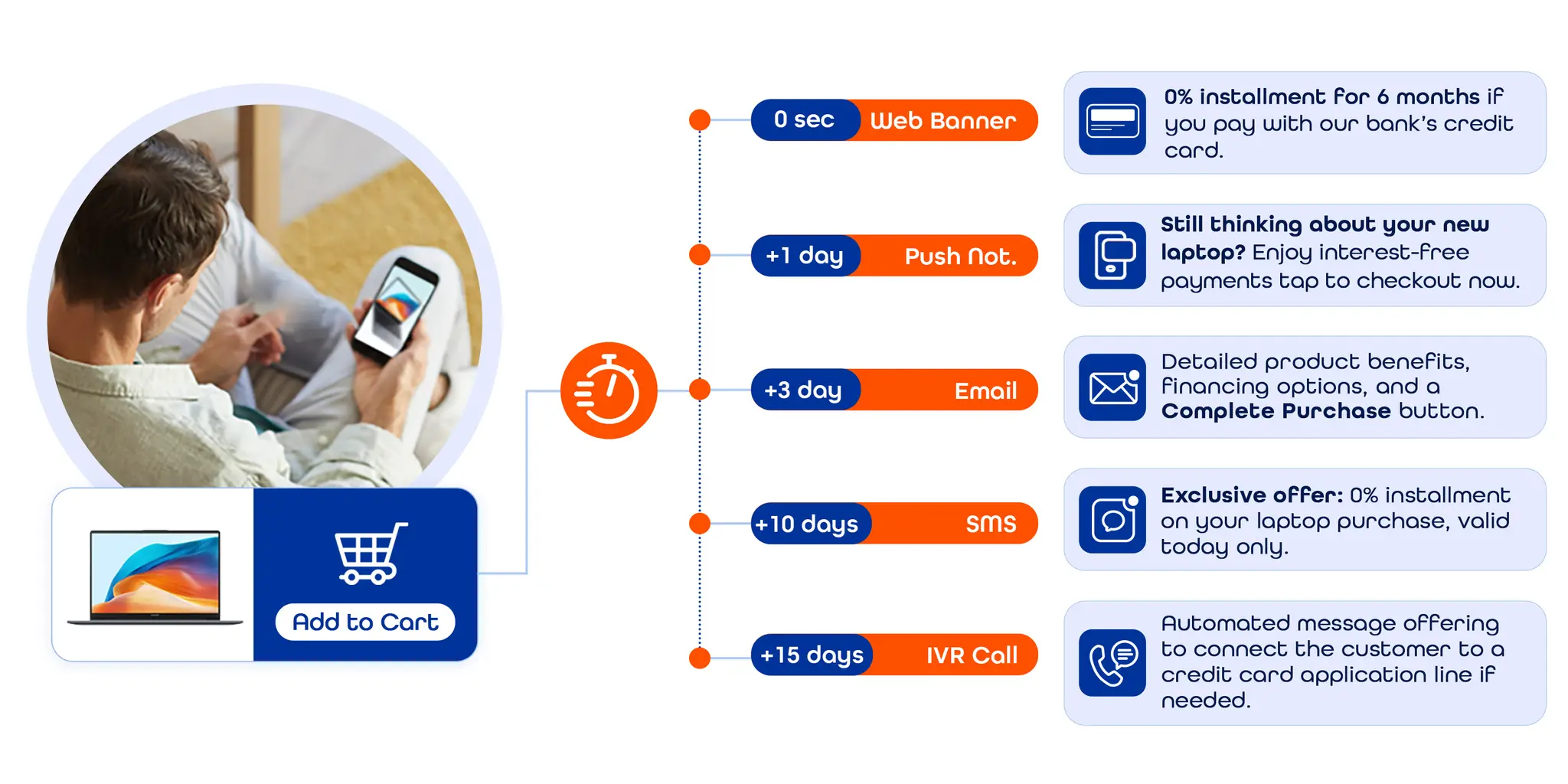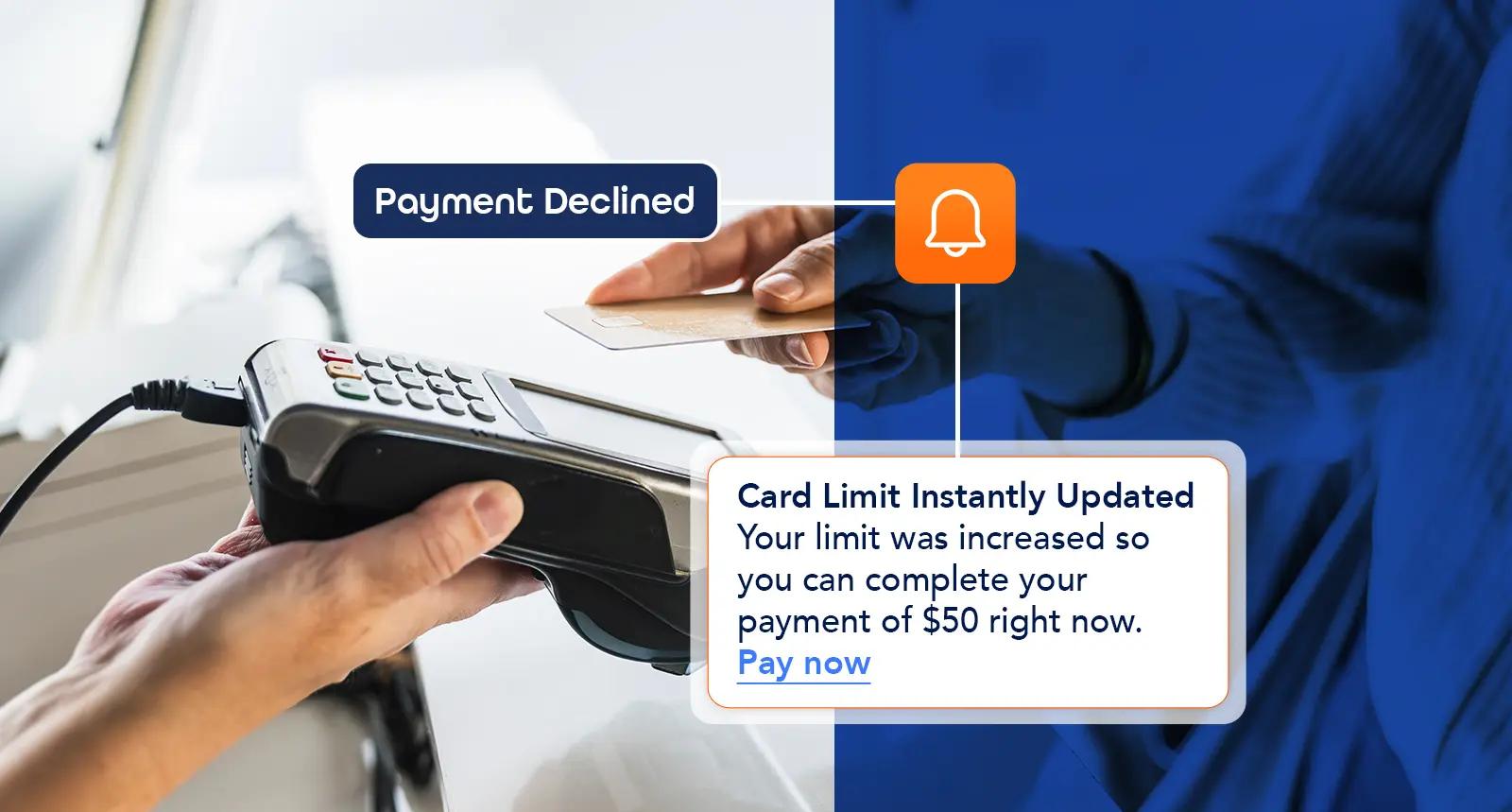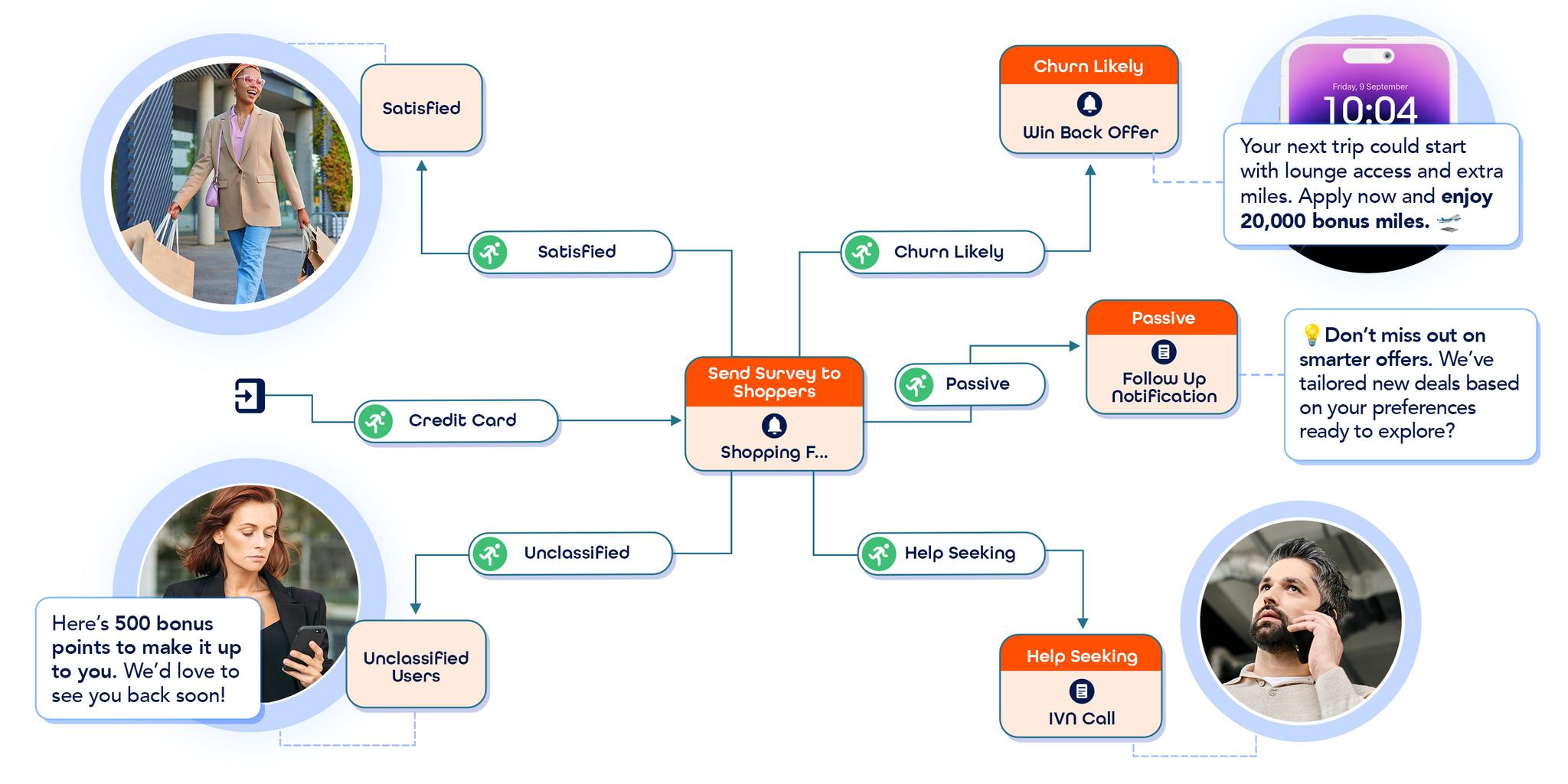- The Essence of Real-Time Personalization
- Types of Real-Time Personalization
- Dynamic Content and Responsive Design
- The Role of AI and Machine Learning in Personalization
- The Benefits of Real-Time Personalization
- Implementing Real-Time Personalization
- Case Studies of Successful Personalization
- Customer Feedback and Adaptation
- Industry-Specific Applications
- Challenges and Considerations
- Conclusion
In today's fast-paced digital world, customer satisfaction is more important than ever. As businesses navigate the competitive landscape, they are continually seeking new and innovative ways to engage with their customers. One of the most effective methods is through real-time personalization. By tailoring content and interactions to meet the individual needs and preferences of each customer, businesses can significantly boost satisfaction and loyalty.
evamX helps teams operationalize this by turning live behavioral signals into next-best actions across channels—so insights translate into outcomes, not just reports.
In this expanded article, we will delve deeper into the concept of real-time personalization, explore its multitude of benefits, and guide businesses on how to implement it effectively to enhance customer satisfaction.
Real-time personalization refers to the ability of a business to adjust its content, services, or products instantly based on the behavior, preferences, and needs of its customers. It encompasses a variety of strategies and tools that enable companies to deliver unique experiences for each customer. This can include anything from personalized website content to targeted marketing messages and customized product recommendations.
The Essence of Real-Time Personalization
At its core, real-time personalization is about understanding each customer's journey and making instantaneous adaptations to suit their current context. Businesses leverage data to determine where a customer is in their buying journey and what interactions will be most effective. By delivering content and offers that resonate with individual customers, businesses can foster deeper connections and ultimately drive customer satisfaction.
Within evamX, journey orchestration, decisioning, and contact-policy controls (e.g., frequency capping, quiet hours) align timing, message, and channel to each customer’s moment.
Types of Real-Time Personalization
Real-time personalization can take many forms, including:
Content Personalization: Adjusting website content to match the interests of the visitor.
Product Recommendations: Offering suggestions based on previous purchases or browsing history.
Email Personalization: Sending targeted email content that aligns with the recipient's behavior or preferences.
Behavioral Targeting: Using customer behavior data to deliver relevant ads and offers.
Location-Based Personalization: Tailoring content and offers based on the geographic location of the customer.
evamX supports these patterns end-to-end by listening to events in real time and activating the appropriate journey on web, app, SMS, push, email, and even call center.
Dynamic Content and Responsive Design
Dynamic content is a crucial component of real-time personalization. It allows businesses to change website content or email marketing messages on the fly, based on user data. This means that each customer can have a unique and personalized experience, tailored specifically to their interests and preferences.
Responsive design plays a key role in delivering this personalized content seamlessly across different devices. Whether customers are browsing on a desktop, tablet, or smartphone, responsive design ensures that the content is displayed optimally, enhancing the user experience.
To protect experience quality, evamX enforces channel-appropriate pacing (e.g., frequency/silent-period rules) so dynamic content never becomes overwhelming.
The Role of AI and Machine Learning in Personalization
Artificial Intelligence (AI) and machine learning are pivotal in executing real-time personalization strategies. These technologies analyze vast amounts of data quickly to identify patterns and predict customer preferences. Businesses use AI to automate the personalization process, ensuring that every interaction is relevant and timely, thereby maximizing customer engagement.
evamX’s AI assistants and next-best-experience decisioning help select the right offer and channel in the moment, based on propensity, context, and recent interactions.
The Benefits of Real-Time Personalization
Real-time personalization offers numerous benefits that can help boost customer satisfaction. These benefits extend beyond immediate engagement and impact various aspects of customer-business relationships.
1. Increased Engagement
Personalized content is more likely to capture the attention of customers, leading to higher engagement levels. When customers feel that a business understands their needs and preferences, they are more likely to interact with the brand. This engagement not only increases the time spent on a platform but also enhances the likelihood of conversion.
Organizations using evamX often pair behavioral triggers with micro-moments (e.g., “browse abandon,” “failed transaction”) to lift engagement without adding friction.

2. Improved Customer Loyalty
By consistently providing relevant and valuable content, businesses can build stronger relationships with their customers. This loyalty translates into repeat business and positive word-of-mouth marketing. Customers who experience personalized interactions are more likely to become brand advocates, sharing their positive experiences with others.
evamX’s journey analytics make it easier to see which loyalty nudges, rewards, or education steps actually deepen retention over time.
3. Higher Conversion Rates
Personalized experiences can lead to higher conversion rates. When customers receive tailored offers and recommendations, they are more likely to make a purchase. This is because personalized interactions reduce the friction often associated with the buying process, making it easier for customers to find what they need.
For example, banking and telco teams commonly use evamX to surface contextual cross-sell/upsell only when eligibility and intent are present—improving conversion quality.
4. Enhanced Customer Experience
Real-time personalization contributes to a superior customer experience by making interactions more relevant and enjoyable. Customers appreciate when businesses anticipate their needs and provide solutions proactively. This not only enhances satisfaction but also differentiates a brand from its competitors.
Contact policies in evamX ensure helpfulness without over-messaging, which directly supports satisfaction scores.
5. Better Data Insights
Implementing real-time personalization requires gathering and analyzing customer data. This process provides businesses with valuable insights into customer behavior and preferences, allowing for more informed marketing strategies. By understanding these insights, companies can refine their offerings and ensure they align with customer expectations.
evamX closes the loop from “insight → action → measurement,” so teams can see which moments, messages, and channels contribute most to NPS and revenue.
Implementing Real-Time Personalization
Implementing real-time personalization effectively requires a strategic approach and the right tools. Businesses must consider several factors to ensure successful integration.
1. Collecting and Analyzing Customer Data
To effectively implement real-time personalization, businesses need to collect and analyze customer data. This data can be gathered from various sources, including website interactions, purchase history, social media activity, and more. By understanding customer behavior and preferences, businesses can tailor their content and interactions accordingly.
Data Collection Methods: Utilize various channels such as surveys, website analytics, and social media listening tools to gather comprehensive data.
Data Analysis Techniques: Employ data analytics tools and platforms to interpret customer data and derive actionable insights.
Privacy and Compliance: Ensure data collection practices comply with privacy regulations and maintain transparency with customers about data usage.
evamX ingests web/app events and system data into live profiles, then uses those signals to autonomously trigger the relevant journey step.
2. Leveraging Technology
Technology plays a crucial role in enabling real-time personalization. There are various tools and platforms available that can help businesses deliver personalized experiences. These include:
Customer Relationship Management (CRM) Systems: CRM systems allow businesses to store and manage customer data, providing a comprehensive view of each customer's interactions with the brand.
Personalization Engines: These tools use algorithms and machine learning to analyze customer data and deliver personalized content and recommendations.
Marketing Automation Platforms: Automation tools help businesses deliver personalized marketing messages at the right time, based on customer behavior and preferences.
evamX complements existing analytics/CRM by acting as the orchestration and decisioning layer that actually delivers the right message, on the right channel, at the right time.
3. Creating a Personalization Strategy
A successful real-time personalization strategy involves setting clear goals and objectives. Businesses need to define what they want to achieve through personalization, whether it's increasing engagement, improving conversion rates, or enhancing customer loyalty.
Goal Setting: Clearly outline the objectives of personalization efforts, ensuring they align with overall business goals.
Segmentation and Targeting: Identify key customer segments and tailor personalization strategies to meet the needs of each group.
Continuous Optimization: Regularly review and refine personalization strategies based on performance data to ensure ongoing effectiveness.
evamX’s reporting ties delivery, click, and conversion to each step in the journey, making continuous optimization straightforward.
4. Training and Development
Investing in staff training and development is crucial for effective personalization implementation. Employees should understand how to use personalization tools and interpret data insights to enhance customer interactions. By equipping teams with the necessary skills, businesses can ensure consistent and impactful personalization efforts across all customer touchpoints.
In-product assistants within evamX help teams build, test, and iterate journeys faster—without heavy IT dependency.
Real-Time Personalization in Action
Many businesses have successfully implemented real-time personalization to enhance customer satisfaction. For example, e-commerce platforms often use personalization to recommend products based on a customer's browsing history and previous purchases. Streaming services like Netflix and Spotify use algorithms to suggest content that aligns with a user's preferences and viewing or listening habits.
For hands-on examples, evamX’s Product Demo Hub showcases scenarios like cart/favorites recovery, failed-transaction rescue, onboarding nudges, and spend accelerators—each driven by real-time behavior.

Case Studies of Successful Personalization
E-commerce Giants: Explore how major online retailers leverage personalization to improve user experience and drive sales.
Streaming Services: Analyze the strategies used by platforms like Netflix and Spotify to maintain user engagement and satisfaction.
Retail Innovations: Discover how brick-and-mortar stores use real-time personalization to enhance in-store experiences.
In financial services and telecom, evamX customers commonly pair intent detection with eligibility checks to deliver timely, compliant offers that improve satisfaction and conversion.
Customer Feedback and Adaptation
Successful personalization initiatives often involve listening to customer feedback and adapting strategies accordingly. Businesses should encourage customers to share their experiences and use this feedback to refine personalization efforts. This iterative process ensures that personalization remains relevant and effective.
evamX can trigger post-interaction surveys and feed the results back into journeys, letting teams close the loop between feedback and the next experience.
Industry-Specific Applications
Different industries apply real-time personalization in unique ways. From financial services offering tailored investment advice to hospitality businesses providing personalized guest experiences, real-time personalization is adaptable across various sectors. Understanding industry-specific applications can help businesses tailor their strategies to meet specific customer expectations.
evamX includes ready-to-adapt templates for banking, telecom, and retail, so industry teams can move from idea to live journey quickly.
Challenges and Considerations
While real-time personalization offers significant benefits, it's important for businesses to be aware of potential challenges. Privacy concerns are a major consideration, as customers may be wary of how their data is being used. Businesses need to be transparent about their data collection practices and ensure they comply with data protection regulations.
1. Privacy and Data Security
Transparency with Customers: Clearly communicate data collection practices and how customer data is used.
Compliance with Regulations: Ensure adherence to data protection laws, such as GDPR and CCPA, to maintain customer trust.
Data Security Measures: Implement robust security protocols to protect customer information from breaches and unauthorized access.
evamX supports governance with eligibility/suppression rules, consent-aware targeting, and channel controls to respect preferences by design.
2. Resource Allocation and Costs
Implementing real-time personalization requires an investment in technology and resources. Businesses must weigh the potential benefits against the costs and ensure they have the infrastructure in place to support their personalization efforts.
Budget Considerations: Assess the financial implications of personalization initiatives and allocate resources effectively.
Technology Investment: Determine the necessary tools and platforms required for successful implementation.
Staffing and Training: Allocate resources for training staff and ensuring they have the skills needed to execute personalization strategies.
Because evamX is marketer-led, teams typically launch and iterate without heavy engineering roadmaps, helping control time-to-value.
3. Balancing Personalization and Privacy
Finding the right balance between personalization and privacy is crucial. While customers appreciate personalized experiences, they are also concerned about their privacy. Businesses need to navigate this delicate balance by being transparent and respecting customer preferences.
Contact-policy features in evamX (e.g., frequency caps, quiet hours) are designed to maintain that balance and protect trust.
Conclusion
Real-time personalization is a powerful tool for boosting customer satisfaction. By delivering personalized content and experiences, businesses can engage customers more effectively, build loyalty, and drive conversions. While there are challenges to consider, the benefits of real-time personalization make it a worthwhile investment for businesses looking to enhance their customer relationships and stay competitive in the digital landscape.
By understanding the needs and preferences of their customers and leveraging the right technology, businesses can create meaningful and personalized interactions that resonate with their audience, ultimately leading to increased satisfaction and long-term success. As businesses continue to innovate and adapt to changing consumer expectations, real-time personalization will play an integral role in shaping the future of customer engagement and satisfaction.
To see these ideas in practice, explore the evamX Product Demo Hub for real-time personalization journeys you can adapt to your stack.








